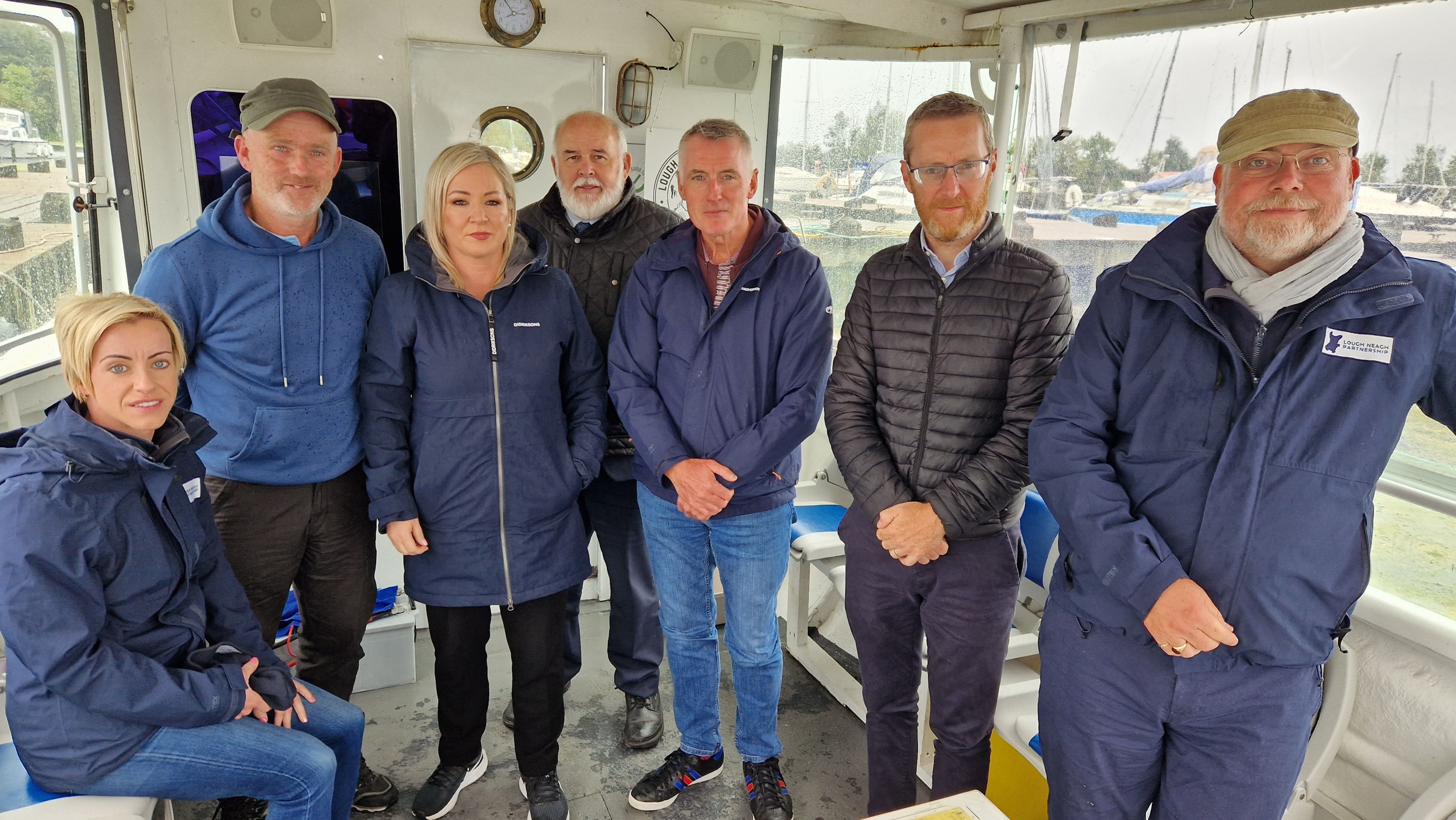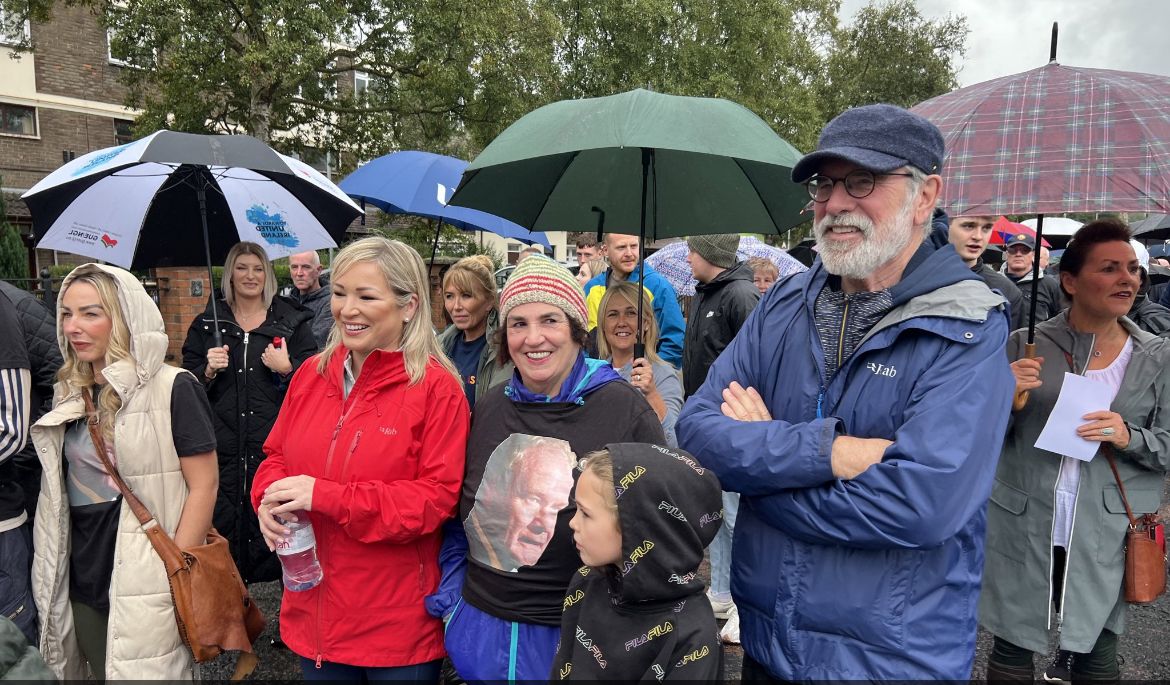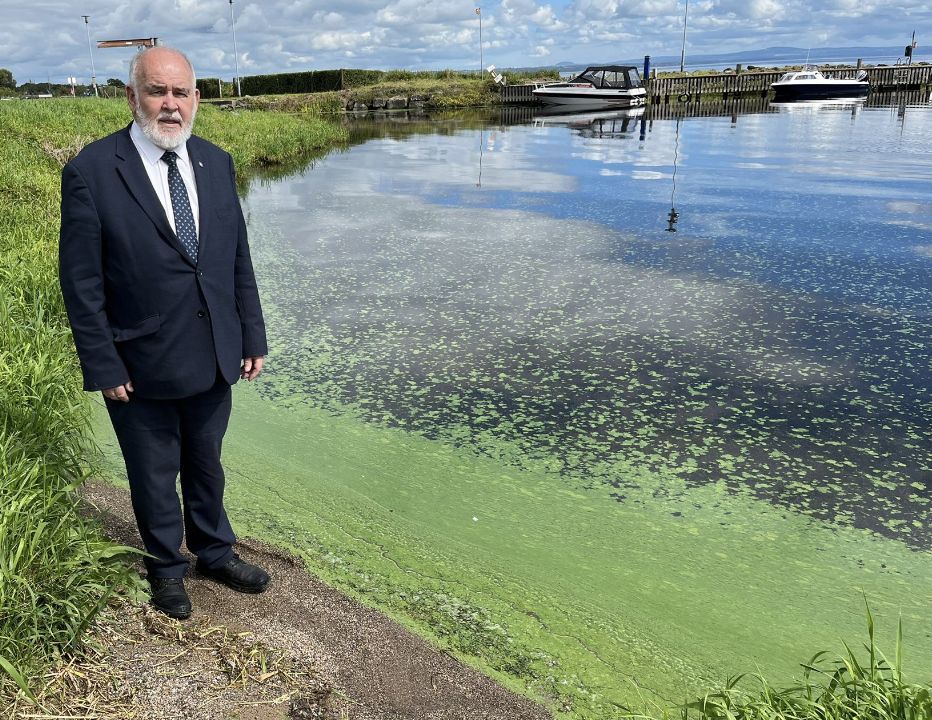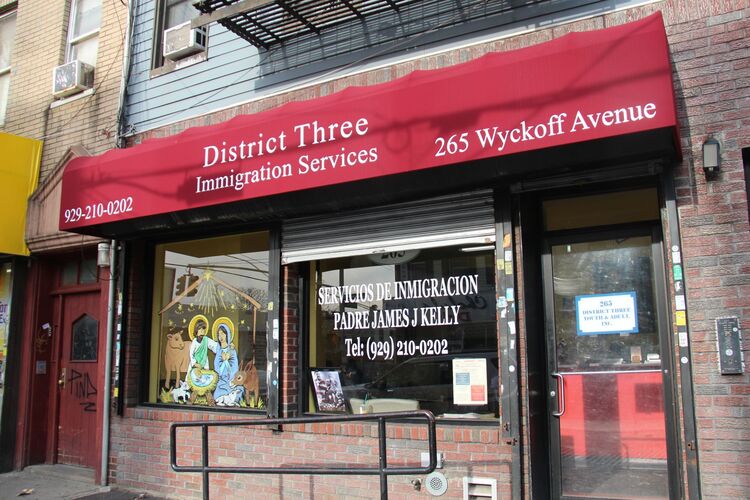UP THE SHORE
i
The lough will claim a victim every year.
It has virtue that hardens wood to stone.
There is a town sunk beneath its water.
It is the scar left by the Isle of Man.
ii
At Toomebridge where it sluices towards the sea
They’ve set new gates and tanks against the flow.
From time to time they break the eels’ journey
And lift five hundred stones in one go.
iii
But up the shore in Antrim and Tyrone
There is a sense of fair play in the game.
The fishermen confront them one by one
And sail miles out and never learn to swim.
Iv
‘We’ll be the quicker going down,’ they say.
And when you argue there are no storms here,
That one hour floating’s sure to land them safely –
‘The lough will claim a victim every year.’
Seamus Heaney’s poem, published in 1969, captures much of what makes Lough Neagh unique. It has long been a place of myth and fable, where the palace of the Tuatha Dé Danann is supposed to lie beneath its waves.
It is said that Lough Neagh was created by the giant Finn McCool who legend claims scooped out a huge chunk of earth and threw it after the Scottish giant Benandonner. He missed and thus created the Isle of Man. Richard believes that the Lough was created 400 million years ago as a result of massive tectonic events.
People have lived and worked around the shores of Lough Neagh for thousands of years. This is evident in the huge number of artifacts and ruins. Stone axes have been found at Toome and Shane's Castle. Neolithic pottery has also been found at Newferry north of Toome.
Sinn Féin representatives meeting with members of the Lough Neagh Partnership.
In the ninth century the Lough was a base for a Viking fleet as part of their efforts to occupy Ireland.
Following the English invasion of Ireland the shores of Lough Neagh have witnessed many battles. It played a strategically important role in the English defeat of the O’Neill and O’Donnell clans in the late 16th century and in the subsequent plantation of Ulster.
The Lough is the largest fresh water lake in Ireland. It is home to many rare plants, waterfowl and fish. It is bordered by five counties – Antrim, Down, Armagh, Tyrone and Derry. For millennia it has been at the heart of the local economy. A transport hub before roads and a major source of fishing that has provided a living for the generations who have lived around its’ almost 400 square kilometers. It is a significant cultural and historic site and in more recent years a place for water sports and relaxation for tens of thousands. It also provides 40% of the fresh water for citizens living in the North.
Today, all of that is under threat. Recent satellite images have shown the extent to which a toxic blue green algae has infested the Lough. Cyanobacteria is a danger to animals and humans. According to the Lough Neagh Partnership, climate change and the increased water temperature of the Lough has created the conditions for this algae to thrive.
In addition, millions of tons of sand have been dredged from the floor of the Lough for building projects here and in Britain. In an article by Tommy Green in "The Detail" last December he reported that around 30% of the North’s “construction sand comes from Lough Neagh … Prior to 2021, when extraction was unregulated, it is estimated that at least 1.1m -1.8m tonnes were being dredged from the Lough every year…”
The Lough Neagh Fishermen’s Co-operative Society warned last year that sand extraction was destroying habitat areas on the floor of the Lough and that this was reducing the number of fish. The impact of the climate crisis, the presence of a toxic algae, the incidence of raw sewage and the dredging of the Lough floor, and the destruction of that critical underwater environment, mean that Lough Neagh is now facing an ecological disaster.
With 40% of the North’s population relying on Lough Neagh for fresh, clean water there is mounting concern that none of the government departments are prepared for, or appear willing, to take the steps necessary to protect this hugely important community and environmental asset.
Last week First Minister designate Michelle O’Neill, Francie Molloy MP, Declan Kearney MLA and Philip McGuigan MLA met with the Lough Neagh Partnership. Later, Declan Kearney led a political and community delegation, including Philip McGuigan, locally based councillors, fishermen, anglers and the Lough Neagh Partnership, to meet senior officials of the NI Environment Agency and Inland Fisheries.
The message is clear. As Mid Ulster MP Francie Molloy said: “The situation is untenable. The Lough needs to be brought into public ownership and managed by a community partnership.” This must include the bed of the Lough which is currently owned by an absentee British Earl who receives royalty payments for every tonne of sands extracted from the bed of the Lough.
There is also an urgent need for a comprehensive and co-ordinated action plan to tackle the toxic algae. A multi-agency and inter-departmental task force is a priority. Public ownership will facilitate a clear management structure to provide immediate and long-term plans to keep the Lough safe and sustainable for future generations.
When I was a young lad a gang of us from Ballymurphy led by Joe Magee used to walk to Lough Neagh and spend the day there. Decades later, in Long Kesh, some of us used to feast on Lough Neagh eels sent to us by the bucket full. The story of Lough Neagh is an integral part of the story and history and environment of the island of Ireland. The ecological crisis it currently faces arises from the actions of human beings. It is our responsibility to change that.
TORY BACKING FOR PINOCHET
Many of my generation will remember the military coup in Chile in September 1973 that overthrew the socialist President of Chile Salvador Allende. The images of the bombing of the Presidential Palace, of an armed and courageous Allende defending the building and the quickly emerging reports of brutality by the Chilean military, horrified many around the world.
The coup was led by General Augusto Pinochet in collusion with the CIA. In the years that followed, Chile became a byword in summary executions, torture and repression. Almost 20 years later, when the regime fell, a truth commission revealed that 40,000 people had been tortured, 200,000 had been forced to flee the country and at least 3,000 were killed.
The British government led by Edward Heath strongly supported the junta. Foreign Secretary Alec Douglas Home wrote that: “For British interests … there is no doubt that Chile under the junta is a better prospect … and the sky-high price of copper (important to us) should fall as Chilean production is restored.” One third of Britain’s copper imports came from Chile. Allende’s nationalization of the copper industry in July 1971 had been condemned by the USA and Britain.
The Labour government that followed Heath imposed sanctions on Chile but during Margaret Thatcher’s tenure as Prime Minister she restored diplomatic relations, authorized visits by British ministers to Chile and lifted the arms embargo. Hundreds of members of the Chilean armed forces were trained by the British and in September 1982 the Thatcher government refused to support a motion at the UN condemning Pinochet’s human rights abuses. British political and economic interest once again trumped human rights and international law.
In October 1998 Pinochet was arrested in London. Not surprisingly, Margaret Thatcher campaigned hard to secure his release. He was returned to Chile in March 2000. By their friends we will know them.
A fine day out at the Chieftain's Walk in Derry.
SIULOID AN TAOISIGH
This column had a great day out in Derry last Sunday at The Chieftain’s Walk organized by The Martin McGuinness Peace Foundation and Martin’s family led by his wife Bernie. There was a similar event in New York. Well done to all involved. It was good to meet many of Martin’s old friends and to walk the ground he trod on many, many times. Despite the rain there was a great turn out.







